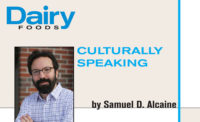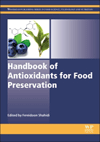A nature-based spoilage solution?
Bio-protective cultures could make your brand more attractive to diverse consumers

It is not hard to imagine a consumer reaching past a bloated yogurt package with a look of disgust. Now imagine him or her reaching past that yeast-spoiled cup for a pristine package of the adjacent yogurt brand, turning it over and then exclaiming, in equal disgust, “Sorbate, I’m not eating that!” The yogurt goes back on the shelf, and the consumer walks away from the cultured dairy aisle.
These consumer demands, to support sustainability by reducing food waste and spoilage while also seeking labels and products cleansed of any suspiciously named preservatives, seem like diametrically opposed tasks. What’s a producer to do? The culture houses have heard the cry, and have come up with a nature-based solution: bio-protective cultures.
Fermentation 2.0
What are bio-protective cultures? In many ways, they are what fermentation has always been about — using one set of microorganisms to prevent the outgrowth of another set of microorganisms to give us the products we crave.
Researchers have taken this basic premise of fermentation to the next level, with a focus on understanding how specific bacterial strains interact with the yeast and molds and prevent these spoilers from growing in dairy. Lactic acid bacteria with the ability to restrain spoilage have been natural constituents of our dairy products for ages. But until the development of modern scientific tools, researchers were not able to isolate, screen and grow them to levels where one can demonstratively show off their abilities to protect our dairy products.
So how do these bio-protective cultures actually work? Well, it depends on the strain. Some strains are present in high numbers and outcompete the yeast and mold for nutrients to grow. Other strains may produce compounds such as certain organic acids or anti-fungal proteins that inhibit yeast and mold outgrowth.
Which is it? Well the culture houses aren’t really sharing that secret, though it’s likely that a combination of these strategies is what makes the best bio-protective cocktail to keep spoilage at bay.
Incorporating bio-protective cultures is straightforward; you can typically add them along with your starter culture. In some other food categories such as meat and fresh produce, bio-protective cultures are sprayed onto the surface of the food. This is a less common practice in dairy, but bio-protective cultures are not a cheap addition, so it might become more common if studies show the cultures can provide the same level of protection.
Not a silver bullet
If you have poor hygiene programs, bio-protective cultures are not going to defend against the hordes of yeast and molds making their way into your product. These cultures are best suited to helping manage incidental, low-level yeast and mold contamination. If you already have your A-game in place for hygiene, these cultures should be able to give you an extra edge on shelf life and reduce consumer complaints.
It is also not clear how broadly these cultures act. Can the culture control only that orange Rhototorula spp., or can it also handle other yeast such as Pichia spp., Candida spp., etc.? Does the culture inhibit all those fuzzy species of Penicillium molds, and can it also handle those pesky Mucor spp. and Phoma spp.?
When working with a culture house to add a bio-protective culture to your tool box, be sure to understand which spoilage organisms commonly cause your problems, and perform challenge studies to confirm you get the activity you need.
Bio-protective cultures represent new tools for producers to tackle spoilage in a consumer-conscious way. They embody all that I love about fermentation, but microbial interactions are complex and always changing. Be sure to do your homework.
Looking for a reprint of this article?
From high-res PDFs to custom plaques, order your copy today!






